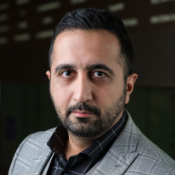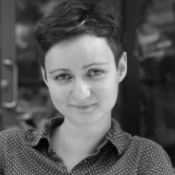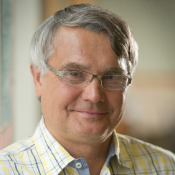The Canada Foundation for Innovation (CFI) has awarded funding to five University of Waterloo researchers.
The announcement was made today by the Honourable Kirsty Duncan, Minister of Science and Sport, as part of a $39 million investment for state-of-the-art research labs and equipment through the John R. Evans Leaders Fund (JELF) that will support 251 researchers across Canada. The national announcement also includes $763 million for CFI over the next five years.
The funding for Waterloo research is valued over $600,000. The researchers are:

Parsin Haji Reza (Systems Design Engineering) Histological and functional photoacoustic remote sensing (HF-PARS) Microscopy ($91,830)
Professor Haji Reza discovered and pioneered Photoacoustic Remote Sensing (PARS) microscopy, a novel absorption-based, non-contact, non-invasive, label-free imaging technique. The proposed research program aims to develop a unique and essential version of PARS technology for clinical and pre-clinical use, entitled Histological and Functional PARS (HF-PARS) which will provide critical information not currently possible to obtain. Long-term, the infrastructure (i.e., nanosecond lasers, multiwave length generation kit, and optical and mechanical component) will open new opportunities for clinical and pre-clinical applications including negative surgical margins in surgical oncology and functional ophthalmic imaging. The program will offer social, economic and academic benefits to Canada by training high-quality personnel, attracting top-tier individuals and international investments to Canada, providing unique solutions for the Canadian healthcare system and, ultimately, improving patient care and well-being

Anna Klinkova (Chemistry) Nanocatalyst characterization and performance studies platform ($130,000)
To foster the transition to a low emissions energy economy without compromising quality of life for the growing population, Professor Klinkovas research aims to develop electrocatalytic systems that utilize the excess electricity from renewable energy sources for the electrochemical conversion of CO2 to valuable products. Pivotal to this technologys success is the development of efficient, selective, and long-lasting catalytic materials. This infrastructure will enable a detailed understanding of how nanocatalyst structure influences chemical reactions by visualizing nanocatalyst structural features and their transformations under reaction conditions. It will also enable establishment of nanocatalyst design framework and development of transformative CO2reduction technologies for industrial applications, while providing excellent training opportunities for the next generation of Canadian scientists.

Sushanta Mitra (Mechanical and Mechatronics Engineering) Infrastructure to characterize capillarity and wetting for under-liquid systems ($150,000)
Understanding how drops wet a given surface is fundamental to the discovery and development of new materials. A recent surge of under-liquid applications has prompted Professor Mitra to look into wetting phenomena on surfaces submerged in surrounding liquid and open new research direction in capillarity and wetting. A custom-built contact angle measurement tool and microscopy system will be used to study under-liquid wetting dynamics and create a unique experimental facility for Canada for researchers and industry partners. The infrastructure will deliver scientific knowledge and transformative solutions toward the development of new materials (substrates) with broad impacts in terms of mitigating underwater dispersion of pollutants, materials discovery with tunable wetting properties, and pushing the frontiers of interface science.

Janusz Pawliszyn (Chemistry) Triple quadrupole mass spectrometer ($100,000)
Professor Pawliszyns team aims to streamline the process of analyzing small molecules in biological samples (e.g., tissue, biofluids) through the development of low cost, practical, and quick analysis methods. Implementing these approaches for monitoring therapeutic drugs will reduce clinical analysis turnaround times, providing healthcare professionals with more accurate and reliable information faster, ensuring more precise drug treatment dosage administration to patients. By providing the tools to non-invasively monitor living tissues and organs during surgeries and other medical procedures, the door opens for an entirely new facet of personalized medicine. These tests have the potential to be implemented in clinical settings, as well as with law, environmental and food enforcement agencies. Building on cutting-edge developments already achieved using a mass spectrometer with extreme quantitative performance, this funding will support retaining the instrument in the lab permanently.

Rodney Smith (Chemistry) Spectroelectrochemical analysis of heterogeneous electrocatalysts ($130,000)
Professor Smiths research investigates solid-state electrocatalysts in an effort to expand the limited scope of electrochemical synthesis. His research extracts chemical information by developing innovative fabrication techniques and spectroscopic methodologies, and exploits the synergy between the two to gain insights into fundamental chemical behaviour. With this funding, the acquisition of a Raman microscope will enable his team to identify and track key structural features and study reaction mechanisms. The advances in fundamental understanding that will arise from the research will guide the development of more selective, efficient, and stable reaction systems. Expanding the scope of industrial electrosynthesis will foster growth of the technology in the chemical manufacturing sector, maximizing the value of renewable energy infrastructure and improving Canadas ability to compete in clean-technology markets.